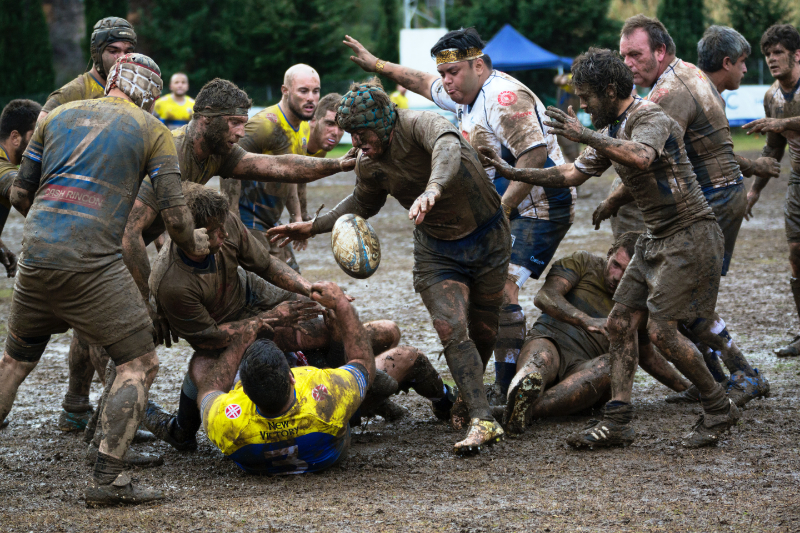
Biological Differences – Part 5.2: Aggression, Risk-taking, and Sex Drive
Human males are more physically aggressive in all cultures at all ages.
~ Richard Reeves
The crisis of men and boys is exacerbated by a political narrative unwilling to acknowledge biological sex differences (What the Political Left Gets Wrong About Boys and Men- Part 3.1). By denying these differences, we cannot reform our educational curriculums to be fairer to boys or our places of work to be fairer to women. If we deny our biological differences, it will be harder for us to “reinvent fatherhood” and embrace the progress made toward gender equality. Given the gains made by women in recent decades and the significant challenges faced by men and boys, it makes no sense to treat gender inequality as a one-way street. Quoting Richard Reeves in my last post, “the rather boring truth is that masculine traits are more useful in some contexts and feminine ones in others, and neither set is intrinsically better than the other.”
Recognizing Biological Differences is a Radical Act
Recognizing and appreciating biological differences between the sexes has become a radical act in our current social-political milieu. Reeves was resistant to providing this counter-narrative but was confronted with the necessity to do so in addressing the crisis of boys and men. Evolutionary psychology, neuroscience, and sociobiology research have explored these issues for many years.
Biological Facts Don’t Deny or Suppress Sexual Preference or Gender Fluidity
Aside from the caveats to biological differences offered by Reeves in my last post, it must also be said: acknowledging basic biological facts does not deter acceptance and exploration of sexual preference fluidity or gender identities. Instead, it clarifies how evolution has built us to reproduce the species and adapt to different physical and cultural environments. For a more in-depth review of physical and behavioral differences between men and women, see Male & Female Biological Differences.
Biological Differences – Part 5.1
In my last post (Biological Differences Between the Sexes – Part 5.1), I described the differences between boys and girls related to the timing of their brain development. “By far,” says Reeves, “the biggest difference is not how female and male brains develop but when.” Boys’ brains develop more slowly, directly affecting their attention, self-regulation, and acquisition of skills and traits necessary for academic success.
Stress, Serotonin, and Aggressive Behavior
I also cited research that a stressful or unstable family environment appears to influence the capacity of the brain to metabolize serotonin. Serotonin helps to reduce aggressive behavior – and thus, a precarious home life would potentially cause boys to be more aggressive. The link between home life, serotonin, and aggression illustrates the interconnectedness of biology and “culture.”
Testosterone Has Significant Role in Behavioral Differences
This synergy of nature and nurture is further illustrated by how behavioral differences manifest between men and women — boys and girls — as a function of how androgens (testosterone) masculinize the brain. (See Appendix below.) Testosterone has a significant role in behavioral differences between the sexes related to aggression, risk, and sex drive.
Aggression, Risk, and Sex Drive
Sex differences in biology shape not only our bodies, including our brains, but also our psychology. We are not blank slates. Some of these differences are more about the timing of development rather than about the end results. But many differences are enduring. “Men are typically more aggressive, take more risks, and have a higher sex drive than girls and women,” says Reeves, reporting the research of Scott Kaufman. [1] Aggression, risk, and sex drive are co-mingled in sexual selection and reproduction. Behaviors of aggression, risk-taking, and sex drive are the most pronounced differences between men and women.
Aggression and Testosterone
One result of the testosterone bath of the male brain is a greater tendency toward physical aggression, not just in humans but in almost all primates and other mammals. Boys are five times more likely than girls to be frequently aggressive by the age of seventeen months! The gap widens until early adulthood before narrowing again. [2]
Testosterone and Aggression – It’s Complicated
According to Carole Hooven in Testosterone: The Story of the Hormone that Dominates and Divides Us, it looks like testosterone does not directly trigger aggression but instead amplifies it depending on the circumstances. The relationship between testosterone, masculinity, and aggression is complex. Reeves notes that most societies have become much less violent over time, and there are significant differences in crime rates among countries today. “That all these factors matter is not evidence that the relationship between T and aggression is weak,” Hooven writes, “rather it shows us that it’s complicated.”
Socialization and Biology Matter
Nobody denies that culture and socialization matter, and it would otherwise be difficult to explain the dramatic difference in levels of male violence between different places and eras. But Reeves adds, “it is equally silly to deny that biology matters here too, not least in the differences between men and women.”
Men Have a Greater Appetite for Risk
“The traits that get passed on are the reproductively effective ones, and that is what sexual selection is all about,” Reeves explains.
Men, for example, have a greater appetite for risk. Risky behavior is not a social construct; it can be identified in every known society throughout history, according to Joyce Benenson: Warriors and Worriers: The Survival of the Sexes.
“Sex differences exist in virtually every area in which risk has been studied,” Benenson reports, “with males engaging in more risk-taking than females – from hunter-gatherers to bank CEOs.”
Men Take More Risks Because of the Competition to Reproduce
Like aggression, risk-taking is one of the differences between male and female psychology rooted in our evolutionary history. Men in danger of becoming evolutionary duds will take serious risks to gain access to a mate — like committing a crime to get more resources or fighting in a potentially lucrative war. Men’s psychology shifts in ways that spark fierce male-male competition.
Reproductive Variance “Blows Your Mind”
Men take more risks because men are much less likely to reproduce than women. We have twice as many female ancestors as male ones. This difference between female and male ancestors is called “reproductive variance.” [3] DNA studies reveal that approximately 80% of women in human history have reproduced, compared to about 40% of men. This variance can take a minute to get your head around. Generally speaking, everyone must have a mother and father. But of course, one man can father many children with many women, while others father none at all. Genghis Khan, a direct ancestor of 1 in 200 people today, is perhaps the most famous example.
Math Problem of Too Many Men
To maximize reproduction, a culture needs all the wombs it can get, but a few penises can do the job. There is usually a penile surplus. ~ Roy Baumeister
Most human societies have been polygynous, allowing men to have multiple wives. You end up with what Harvard evolutionary psychologist Joseph Henrich calls the “math problem” of surplus men.
Men Will Risk to Save Others and Build Cities
Though male psychology is more wired for risk, antisocial forms of risk-taking (such as crime) occur only in circumstances of intense competition. Men are more willing to take risks to save others and do dangerous jobs (logging, construction, mining, fishing), which makes perfect evolutionary sense given the greater importance of female bodies for reproduction. We must be thankful for our (mostly male) firefighters, soldiers, and men who build skyscrapers. (Ninety-three percent of workplace fatalities were male in 2016, and 99.9% of military deaths are male.)
Courageous Acts by Men
Each year the Carnegie Hero Fund issues medals to civilians for courageous acts, specifically for risking their lives to save a stranger. In 2021, 66 of the 72 medals were awarded to men. As Margaret Mead wrote, “It is essential that the tasks of the future be organized [such that] dying for one’s country becomes unfeasible, and taking risks for that which is loved may still be possible” (Male and Female: A Study of the Sexes in a Changing World).
Men Are Just Lustier
Given that the differences between male and female psychology have emerged largely through sexual selection, it should be no surprise that the most significant difference between men and women is related to sex. As a matter of biological fact, men are just lustier and have, says anthropologist Melvin Konner, a more “driven” sexuality than women.” [4]
Female Drive and Sexual Motivation is Not as Strong
Occasionally there are articles by female bloggers asserting that the female sex drive is equal to a man’s. (It seems to be a badge of empowerment.) A recent one used evidence about rising female infidelity and described how women have a stronger “response desire” sexual motivation.
The phenomenon of “response desire” comes from Emily Nagoski, a sexuality expert and author of (Come As You Are). Nagoski disputes that sex exists as a “drive,” but she is clear that it is a motivational system in which men pursue with predominantly “spontaneous desire” and women operate primarily from “response desire” (See Spontaneous and Response Desire – the Underbelly of Heterosexual Mating.)
Response Desire is Evidence of a Less Robust Sex Drive
Response desire requires specific triggers (“a reason to have sex”) and a convergence of appropriate context to be guided into a sexual response. This is not proof of a stronger sex drive for women – quite the opposite. Response desire demonstrates a more complex and genuinely “weaker” sex drive that needs “jump-starts” out of a “neutral” gear. The spontaneous, initiating sexuality of a man is the essential condition of a higher sex drive. By definition, an always-ready spontaneous motivation for sex is “lustier’ than waiting for the right elements of context to provide a response motivation.
Using Nogaski’s research on response and spontaneous desire to make a case for a stronger female sex drive is a mischaracterization of her work.
Women Complain About Men’s Stronger Sex Drive Yet Dispute Its Existence
The fact that some women want to dispute that men have a stronger sex drive while also complaining about that very “lustiness” is silly and annoying. It is disrespectful to men to not accept the greater strength of the male sex drive as a biological fact, and it creates a pernicious double-bind for men when their sex drive is described pejoratively.
Acknowledging that men have a more robust sexual motivation system does not disempower women or denigrate their sexuality. Any logical analysis of sperm competition, male-on-male intrasexual competition, and reproductive variance would quickly reveal the evolutionary necessity of a more “muscular” male sex drive.
Evidence for a Stronger Male Sex Drive
As I have outlined in my blog posts and other writings, the evidence for men having a higher sex drive is shown in a review of 150 studies. Reeves summarizes some of this evidence, sourcing Roy Baumeister and colleagues. He could have also cited more recent work of Justin Lehmiller, Tell Me What You Want.
From Lehmiller, a higher male sex drive is evidenced by the following:
- More spontaneous sexual thoughts
- More variety of sexual fantasies
- Greater power of visual triggers
- Desired frequency of intercourse
- Desired number of partners
- Frequency of masturbation
- Liking more varied sexual practices (in general)
- Unwillingness to forgo sex
- Initiating vs. refusing sex
- Making sacrifices for sex
- State of near-perpetual readiness
- Men pay for sex; women seldom do [5]
Women need a reason to have sex. Men just need a place.
~ Billy Crystal Character, City Slickers
Women Cheat for A Variety of Reasons
Women cheat on their partners for a variety of reasons unrelated to their sex “drive.” As relationship expert Esther Perel says (Mating in Captivity and The State of Affairs), “women are often looking more for a new self than a new partner.” (Also see Why Women Have Sex).
The Issue of Sexual Variety
Male sexuality generally seeks a variety of partners. Studies show that women may want more variety of sex with the same partner. But wanting more variety of sexual activities in a monogamous relationship just proves that women need more potent triggers for their sexual desire to be activated. Yes, more women are bored with the sex they are having. Men are not nearly as bored.
Another Way to Deny Biological Difference
Asserting an equal sex drive is another way for women and proponents of “progressive” politics to deny biological differences between the sexes. It is fueled by a false belief that a lesser aggregate sex drive somehow disempowers women in their quest for economic and political equality.
Evolutionary Reason for the Stronger Male Sex Drive
“There is a good evolutionary reason for this difference in sex drive. With a much higher chance of failing to father any children, men have had to be ready to take almost any opportunity for procreation,” says Reeves.
“Physically, men in their prime are hardwired to be in a state of near-perpetual readiness to couple with any female in their environment who is likely to conceive and bear children,” writes Marianne Legato, director of the Foundation for Gender-Specific Medicine.
In Conclusion – Connecting the Dots
How do biological differences between the sexes influence the crisis of boys and men?
- By denying biological sex differences, it is easier to see the causes of the boys and men crisis as individual and not structural.
- By denying biological sex differences, it is easier to believe that gender inequality only disadvantages women.
- By denying biological sex differences, the needs of boys and men can remain invisible and not worthy of remediation through social policy and civic initiatives.
How do differences related to aggression, risk-taking, and sex drive cause or exacerbate the crisis of men and boys?
- Expressions of aggression and risk-taking by boys can be misunderstood and inappropriately vilified in our schools.
- Expressions of aggression, risk-taking and sexual motivation by boys and men can be labeled as toxic. Masculinity is thus pathologized, sending a signal to half of the population that there is something intrinsically wrong with them. Solutions based on this perception will be inappropriate, if not counter-productive.
[1] Scott Barry Kaufman, “Taking Sex Differences in Personality Seriously,” Scientific American, (December 2, 2019).
[2] Baillargeon, R., et al, “Gender Differences in Physical Aggression: A Prospective Population-Based Survey of Children Before and After 2 Years of Age,” Developmental Psychology February 2007).
[3] Jason Wilder et al., “Genetic Evidence for Unequal Effective Population Sizes of Human and Females and Males,” Molecular Biology and Evolution (November 2004).
[4] Melvin Konner, Women After All: Sex, Evolution, and the End of Male Supremacy, 2016.
[5] About 1 million prostitutes are working in the US today. A study in New York found that opening a strip club or escort agency reduced crime in the surrounding neighborhood by 13%.
Appendix
Masculinizing the Brain
All humans start out as female. The Y chromosome of human males begins to masculinize the body during the first (prenatal) two months and the brain during the first trimester. Male brains in the second trimester are usually altered by exposure to androgens that influence psychological sex differences, predicting the degree and kind of postnatal play preferences (rough and tumble), personality traits, (thrill-seeking and aggression), and cognitive abilities (mental rotation). Psychological sex differences emerge before extensive gender socialization has taken place.




